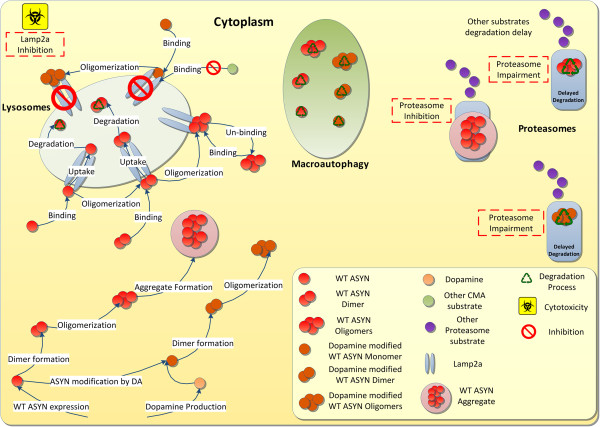Figure 1.

Modeled ASYN dynamics in the cytoplasm. Following protein expression and oligomerization, monomers and dimers bind to Lamp2a and either continue to oligomerize or release the receptor by entering the lysosome and undergoing degradation. Oligomers (i.e. Low Molecular Weight (LMW) species up to nonamers in this study) also bind to Lamp2a but they do not enter the lysosome and they do not affect the degradation of other substrates. On the other hand, dopamine-modified monomers bind to Lamp2a, oligomerize without entering the lysosome and inhibit the functionality of the receptor. Species up to oligomers of WT and modified ASYN are degraded via macroautophagy. Oligomers of ASYN are targeted for degradation by the proteasome, but also can impair its function. Aggregates of ASYN (i.e. High Molecular Weight (HMW) species beyond nonamers in this study) can inhibit the proteasome’s function (not observed in our experimental setting, see text for details).
